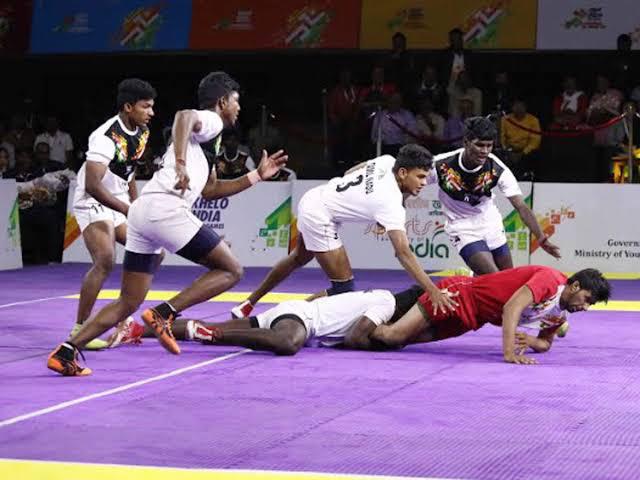
In BJJ, Submission Grappling, and Wrestling, improving your ability to explode into takedowns doesn’t just add more brute strength to your takedowns, it also allows you to close distances quicker as your entry speed increases.
Plyometrics are widely viewed as one of the most effective types of strength training to build explosive power. You typically don’t have any deceleration phase during your reps, allowing you to explode into your reps fully. You can’t do that with conventional weightlifting exercises.
For example, performing a bench press explosively would require throwing the barbell up as you complete your rep. You can perform the rep explosively, but you’ll have to slow down at the top to retain control of the barbell.
Exercises like box jumps, skater hops, and medicine ball drills help to build explosive power and agility, two attributes that will make your takedowns more effective.
What Is Plyometric Training (And Why You Need It)
Plyometrics, often called “jump training”, uses short bursts of explosive movement to build power, speed, agility, and coordination. Instead of grinding through slow lifts, you load muscles eccentrically (stretch), then fire them concentrically (contract) as fast as possible.
This fast stretch-shortening cycle trains your nervous system to recruit more muscle fibers in shorter windows, translating to quicker entries and more forceful sprawls on the mat.
A slow penetration step can potentially cost you dominant positions. Plyometrics increases the raw power you can generate when driving for takedowns, while improving muscle coordination and agility. The more explosive your entries are, the more fluidly you can shoot in for takedowns or sprawl out when defending.
Exercises To Build Explosive Strength For Takedowns
Now that we’ve covered what separates plyometrics from other approaches to strength and conditioning, let’s explore some plyometric exercises that can help you build explosiveness and deliver more powerful takedowns.
1) Box Jump Power For Penetration Speed
This exercise mimics the penetration step used to set up takedowns in grappling sports like BJJ, wrestling, and Sambo. Your penetration step with your lead leg mimics a one-leg box jump. You drive through your foot, explode upward and forward, and land squarely in your opponent’s space.
Find a sturdy bench or box that can hold your weight. Start with something a little higher than your knees and increase the height as you build explosive strength.
Here’s what the exercise looks like:
- Stand facing the platform with your feet spread shoulder-width apart.
- Hinge your hips back while keeping your chest high.
- Dip quickly and push your feet against the ground as you swing your arms and explode onto the box.
- Land softly with your knees bent to absorb the impact and step down gently. Aim for three sets of five to ten reps, three times weekly, and rest 60 seconds between sets.
2) Skater-Hop For Lateral Sprawl Speed
Skater hops mimic the lateral shifts that you use to sprawl out of level changes. Each hop improves your ability to extend your hips rapidly and increase your stability on one leg.
You don’t need any equipment to perform skater hops; just find an open area where you can move around freely. Here’s what the exercise looks like:
- Start standing on one leg with your knee slightly bent and your arms in front of you.
- Push off laterally with your weighted leg, land on the other, then immediately push off again to return to where you started.
- Keep alternating until you get 20 reps. When done correctly, you should look like a skater trying to build up their speed. Perform the exercise two to three times weekly and aim for two sets with 45 seconds rest between sets.
3) Medicine-Ball Slams For Sprawl Recovery
Medicine-ball slams build explosive strength in your core, hips, and shoulders, making it easier for you to pick up opponents and slam them.
To perform medicine ball slams:
- Hold on to a 10 kg medicine ball while standing upright with your feet shoulder-width apart.
- Lift the ball overhead to engage your lats and core, and throw the ball to the ground as hard as you can. Catch the rebound if you can and reset at full extension to complete the rep.
- Perform three sets of ten reps three times a week.
4) Medicine Ball Throws For Rotational Takedowns
Rotational power is vital for many throws and trips. Medicine ball drills build core strength and teach you to transfer force from your hips to your hands—key for moves like the uchi mata or hip toss.
Here’s what the exercise looks like:
- Stand sideways next to a wall while holding a 6 to 12 kg medicine ball.
- Rotate your hips and shoulders away from the wall, then explosively throw the ball into the wall.
- Catch the ball on the rebound and rotate away from the way to complete a rep. Turn 180 degrees so your other side is now facing the way, and complete another rep.
- Aim for three sets of eight reps and perform the exercise 2-3 times a week.
Sample Plyometric Workout Plan
|
Day |
Drill |
Sets × Reps |
|
Monday |
Box Jumps and Med-Ball Slams |
3×5 box jumps, 3×10 slams |
|
Tuesday |
Skater Hops |
2×20 hops per side |
|
Wednesday |
Box Jumps and Med-Ball Slams |
3×5 box jumps, 3×10 slams |
|
Thursday |
Skater Hops |
2×20 hops per side |
|
Friday |
Box Jumps and Med-Ball Slams |
3×5 box jumps, 3×10 slams |
|
Saturday |
Skater Hops |
2×20 hops per side |
|
Sunday |
Rest or light mobility work |
— |
Tips to Get More Out of Plyometrics
- Warm up dynamically with exercises like leg swings, hip circles, and light jogging to prep your stretch-shortening cycle.
- Prioritize form over everything else. A slightly lower, controlled jump is better than a sloppy max rep.
- Progress sensibly. Increase box height or slam weights only when the current rep feels too easy.
- Listen to your body. Plyometrics puts additional stress on joints when done with improper form. Always remember to reassess your form if anything hurts.
Ready To Rocket Your Entry Speed?
Pair up some video plyometric drills with mat time at reputable gyms like Evolve MMA, and you’ll quickly increase explosive power for your takedowns and sprawls. Explosive strength will help you in many other aspects of grappling, like your sweeps, counters, and reversals.
You may also like:
How To Improve Bone Density For Stronger Punches And Kicks
Flexibility plays a crucial role in how well you can execute many fighting techniques. For example, you need a certain level of hip flexibility to throw high kicks in Muay Thai or to use the…
Your isometric strength plays a role in martial arts like Brazilian Jiu-Jitsu, Wrestling, Boxing, and Muay Thai, whether you realize this or not. Anything that requires holding a position while fighting against tension and other…
Combat sports demand a fluid synergy of raw power, speed, mobility, balance, and agility. Animal movements are one of many ways fighters can strengthen their bodies to perform optimally. These exercises involve mimicking the movements…
Running has historically been a considerable portion of many martial arts fighters’ training regimens, but it’s not the only way to get your heart pumping and build up your cardiovascular endurance. Many non-traditional workouts challenge…
High-intensity training is one of the best and most effective ways to reach your fitness goals, whether for general health or conditioning as a martial artist. It helps push your mind and body to the…
Juggling work obligations, family responsibilities, and martial arts training can be challenging. Micro workouts are one of the ways people with busy schedules keep their bodies in excellent shape without spending hours at the gym….
Many professional athletes incorporate swim training into their workout routines to take their training to the next level. Swim training pushes your lung capacity and muscle endurance, helping to build you into a more durable,…
You’ve probably heard that martial arts training builds character, discipline, and confidence, but did you know it can also help children with attention-deficit/hyperactivity disorder (ADHD) manage their symptoms? In a fast-paced, academically driven place like…
Nowadays, it’s common for teenagers to spend hours each day on electronic devices like smartphones, tablets, TVs, and gaming consoles. Most of them spend way more time staring at screens than they do on their…
Feeling a little anxious heading into your first sparring session in martial arts is perfectly normal. You’ve never had the chance to test your skills against resisting opponents, and you’re unsure about how well you’ll…
Intermittent fasting (IF) has been popular among martial arts fighters for decades, with legends like Georges St. Pierre swearing by its effectiveness. While the idea of skipping meals before intense training often sparks debate, this…
The cross is one of the most powerful punches in a boxer’s arsenal, and it also covers more distance than every other type of punch besides the jab. It’s an outside range weapon that can…


![[WATCH] Virat Kohli opens up on fondness for Chinnaswamy Stadium](https://lbsports88.com/wp-content/uploads/2025/11/watch-virat-kohli-opens-up-on-fondness-for-chinnaswamy-stadium-360x180.jpg)



![[WATCH] IND vs SA 2025: Rishabh Pant vents frustration at Kuldeep Yadav for slow over-rate warning](https://lbsports88.com/wp-content/uploads/2025/11/watch-ind-vs-sa-2025-rishabh-pant-vents-frustration-at-kuldeep-yadav-for-slow-over-rate-warning-360x180.jpg)

























![[WATCH] Virat Kohli opens up on fondness for Chinnaswamy Stadium](https://lbsports88.com/wp-content/uploads/2025/11/watch-virat-kohli-opens-up-on-fondness-for-chinnaswamy-stadium-120x86.jpg)



![[WATCH] Virat Kohli opens up on fondness for Chinnaswamy Stadium](https://lbsports88.com/wp-content/uploads/2025/11/watch-virat-kohli-opens-up-on-fondness-for-chinnaswamy-stadium-350x250.jpg)